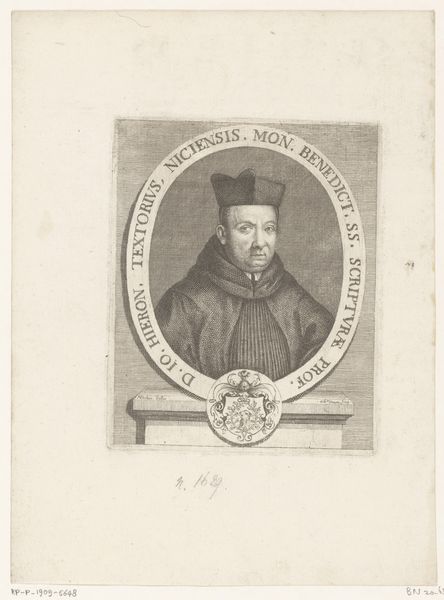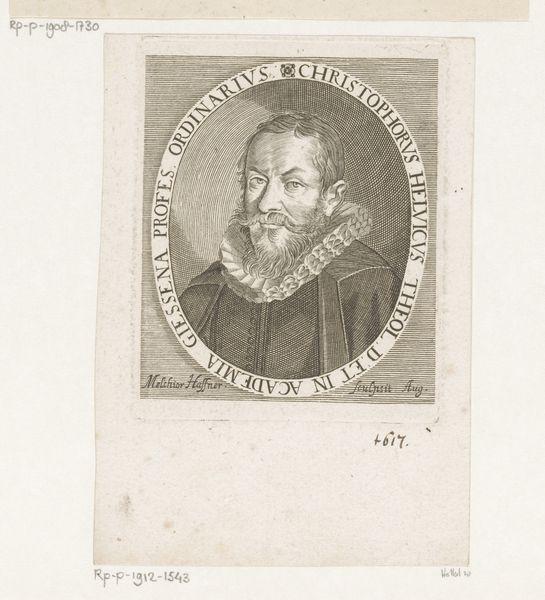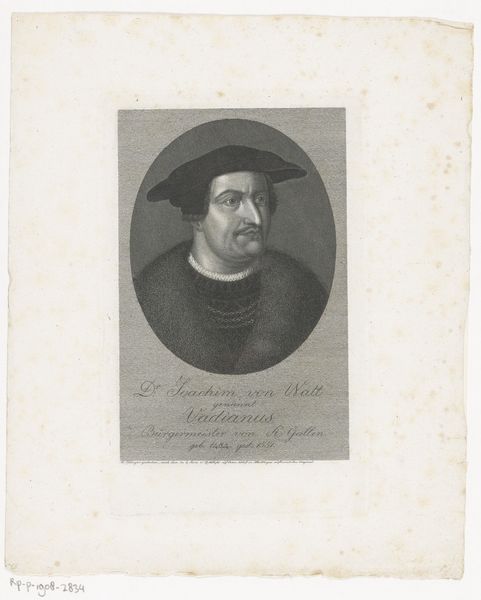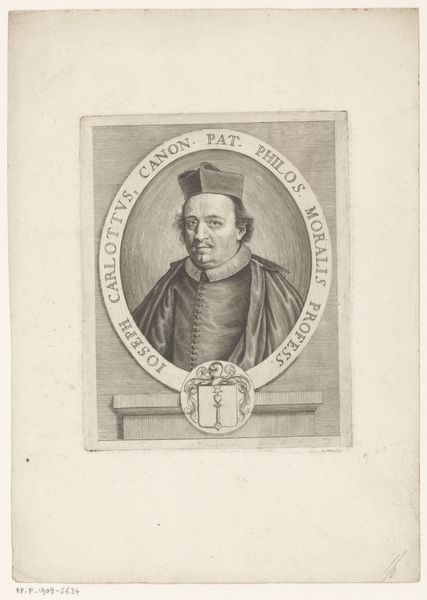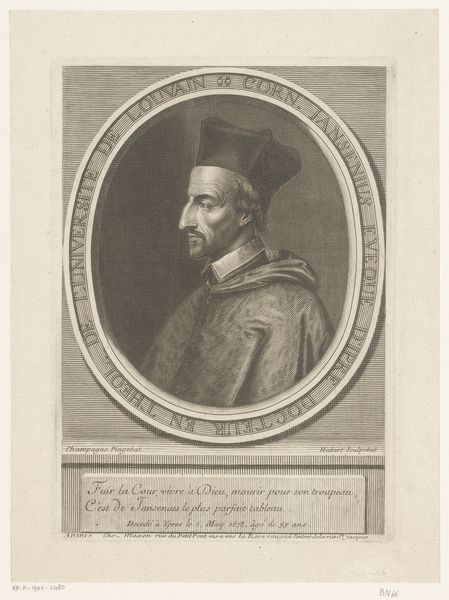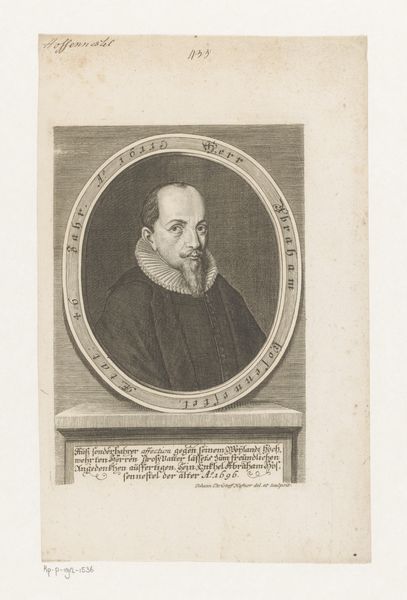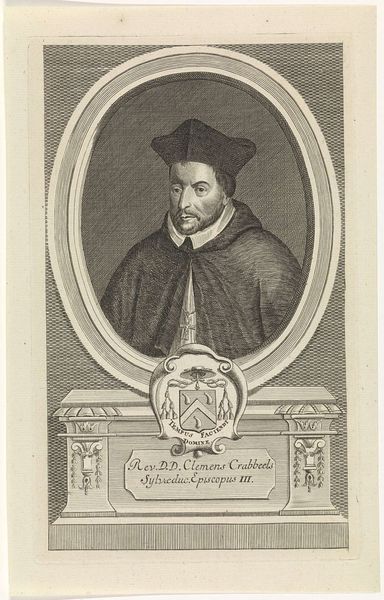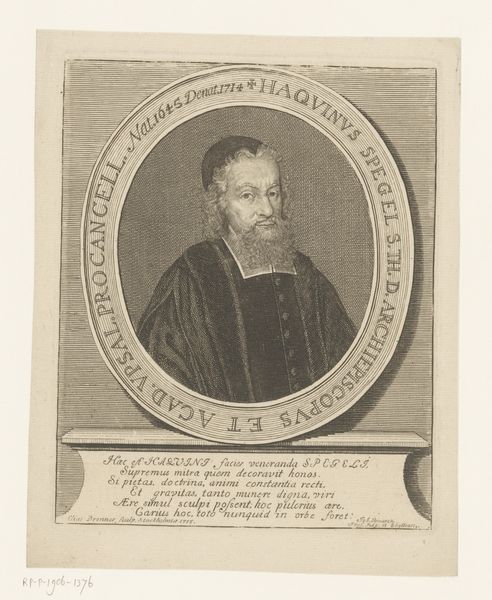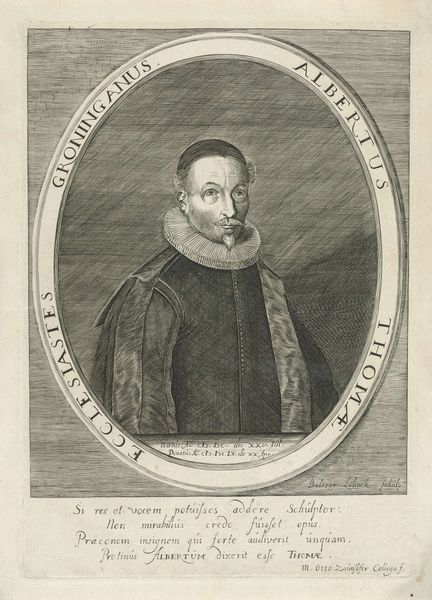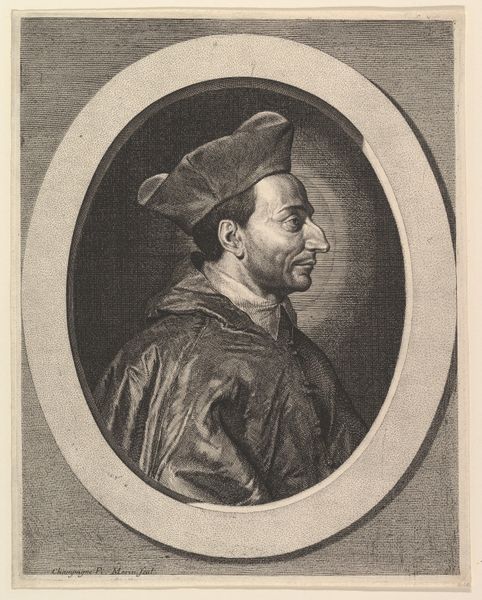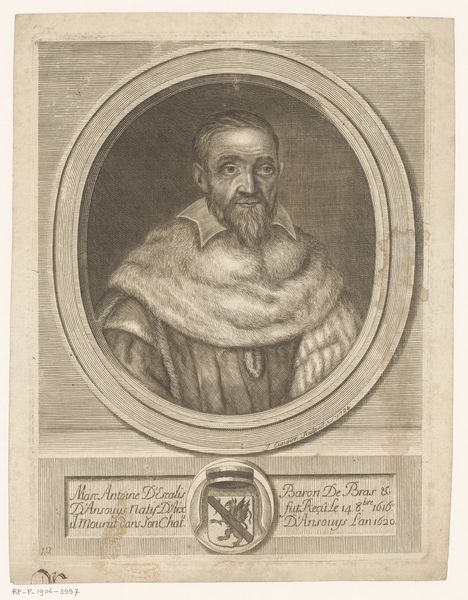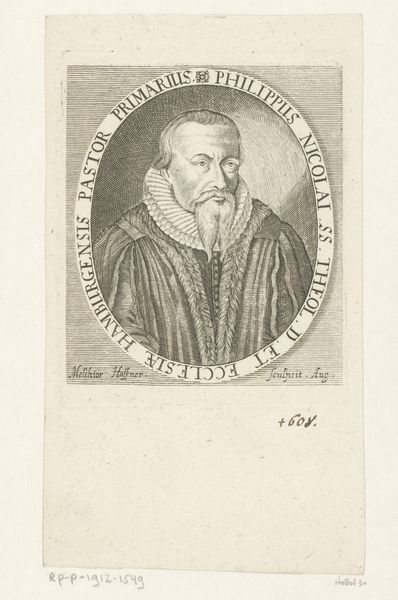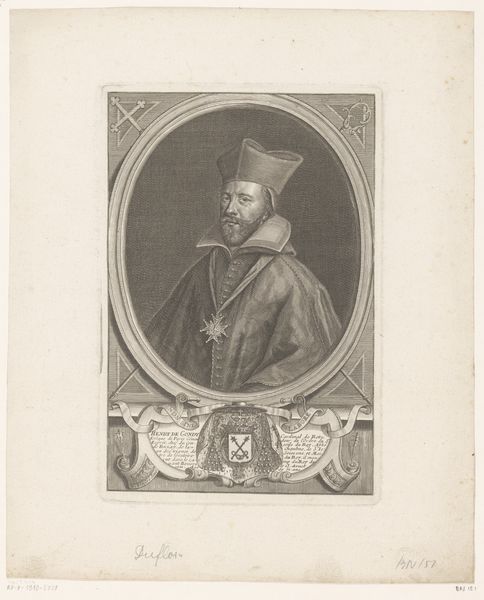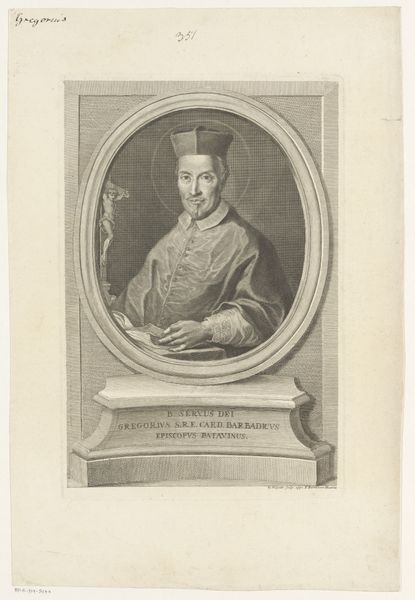
engraving
#
portrait
#
medieval
#
baroque
#
old engraving style
#
history-painting
#
engraving
Dimensions: height 143 mm, width 116 mm
Copyright: Rijks Museum: Open Domain
This portrait of Karl Fugger was made by Lucas Kilian in the early 17th century, using engraving. This process involves incising an image onto a metal plate, inking it, and then pressing it onto paper. The real skill here lies in the control of line. Kilian used different weights and densities of line to create shading and texture, giving the portrait a remarkable sense of depth. Notice, for example, how the lines are finer and more closely spaced in the darker areas of the face and clothing, and how they curve to suggest the contours of the body. Engraving was a highly skilled and labor-intensive process. It required years of training to master the techniques of cutting and burnishing the metal, and a steady hand to create the fine lines that define the image. Kilian's printmaking reflects a tradition of craft and skill that existed alongside fine art. By emphasizing the materiality and process of the artwork, we can appreciate its full meaning and significance, challenging traditional distinctions between art and craft.
Comments
No comments
Be the first to comment and join the conversation on the ultimate creative platform.
